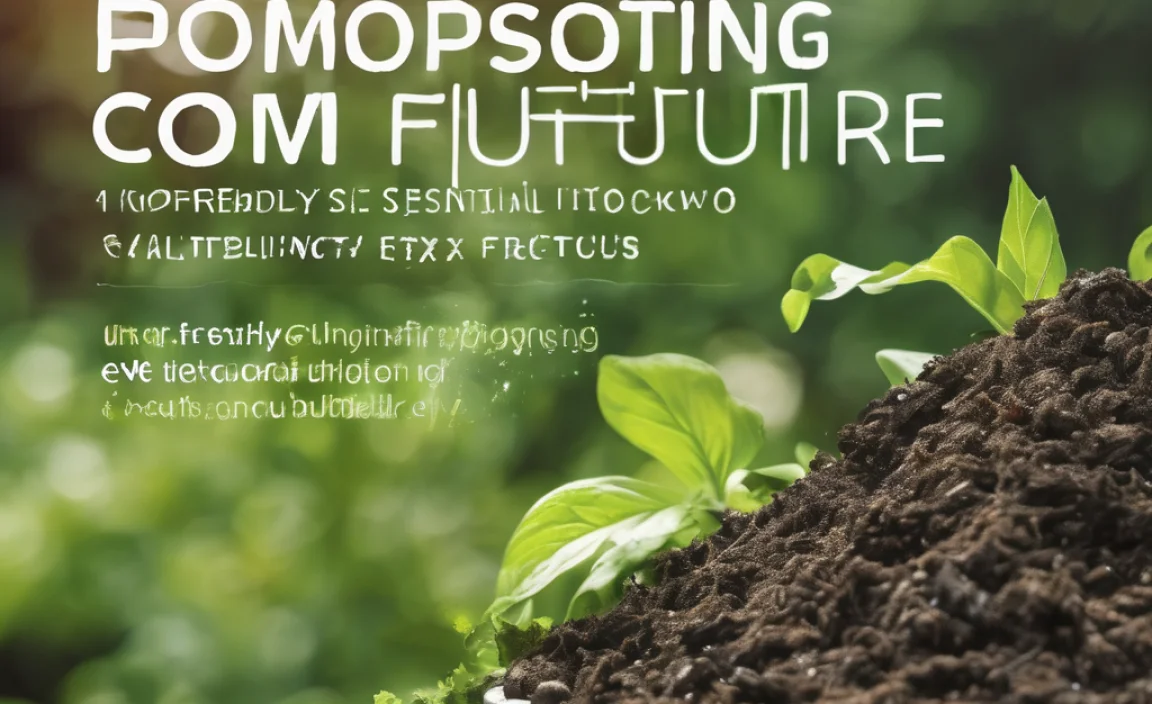Running a restaurant means dealing with a lot of food scraps and kitchen waste. It can feel like a never-ending pile! But what if you could turn that waste into something valuable?
Good news: you can! Composting is a fantastic way to reduce your restaurant’s environmental impact and even save money. It might sound complicated, but it’s totally doable with the right training and a simple plan.
This guide will walk you through everything you need to know to get your restaurant composting program up and running smoothly. We’ll cover the basics, the benefits, and how to train your staff so everyone’s on board.
Let’s dive in and make your kitchen waste work for you!
Why Composting for Restaurants is a Game-Changer
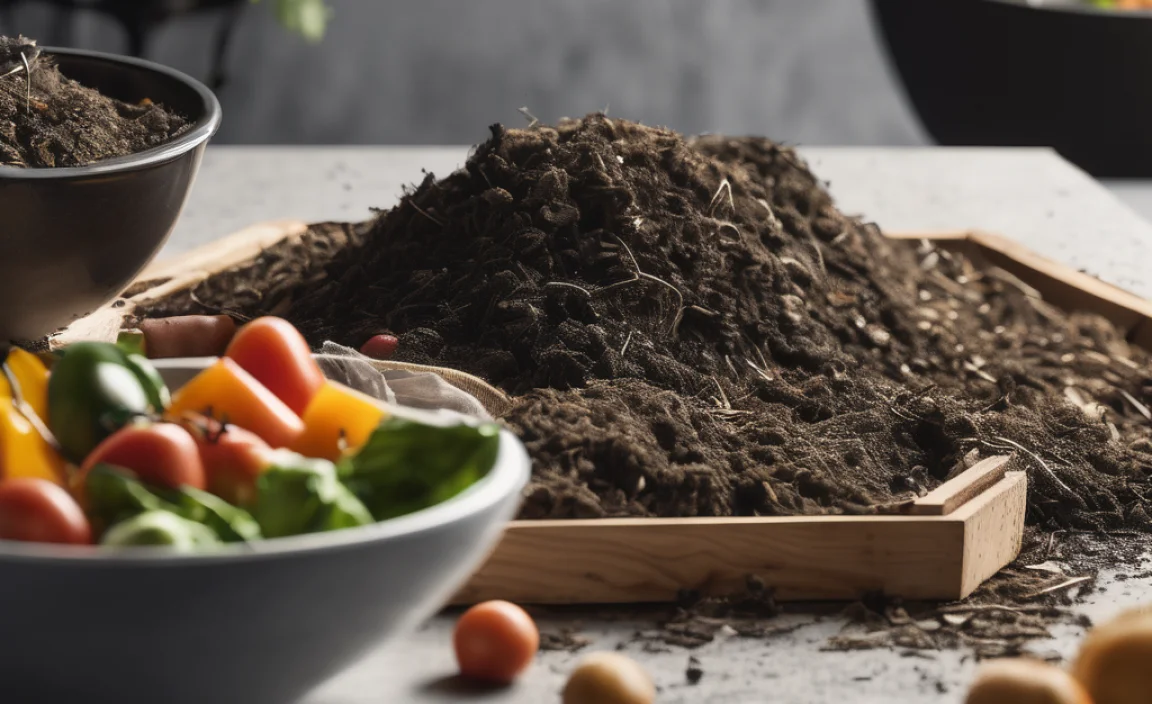
Think about all the organic waste your restaurant produces daily: vegetable trimmings, coffee grounds, leftover food, and even paper napkins. Much of this ends up in landfills, taking up space and releasing harmful methane gas.
Composting offers a smart alternative. It’s nature’s way of recycling, turning organic materials into rich, nutrient-filled soil. For restaurants, this means:
- Reduced Waste Disposal Costs: Less trash means lower hauling fees.
- Environmental Responsibility: Significantly cut down your landfill waste and greenhouse gas emissions.
- Positive Brand Image: Show customers you care about sustainability, which can attract eco-conscious diners.
- Potential for Soil Creation: The finished compost can be used in your own landscaping or even donated.
- Employee Engagement: Staff can feel proud to be part of a green initiative.
It’s a win-win for your business, your community, and the planet.
Getting Started: The Basics of Restaurant Composting
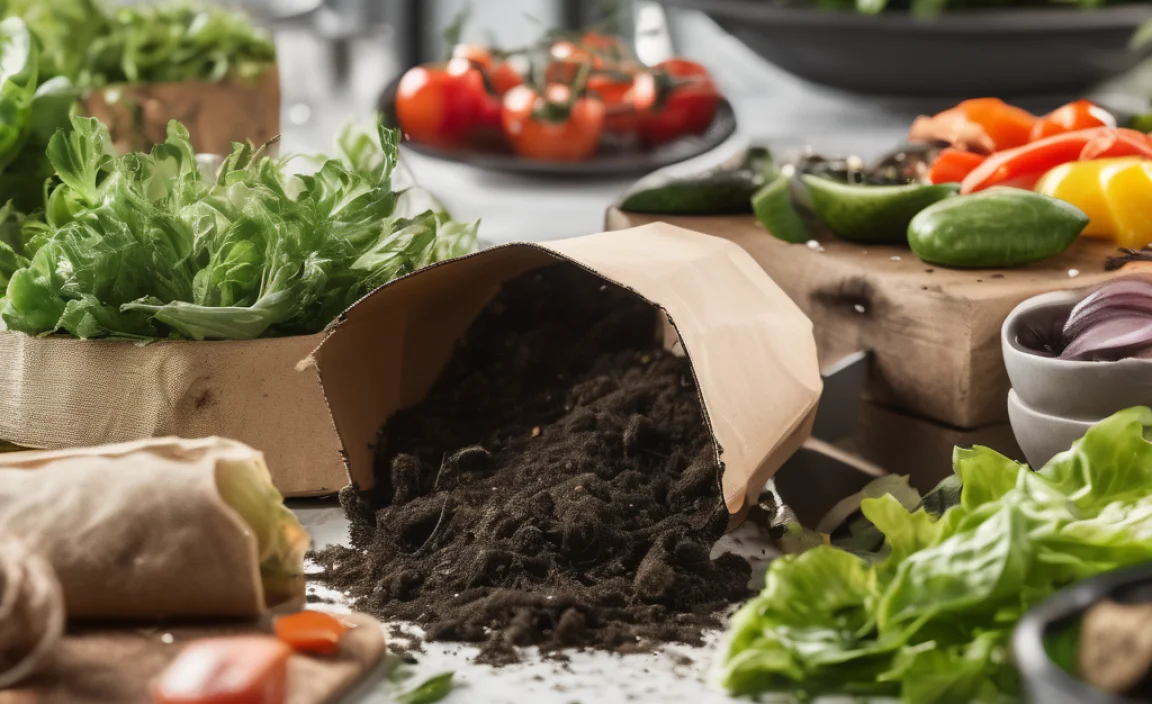
Before you start, it’s helpful to understand what composting is all about and what you can and can’t compost. The official Environmental Protection Agency (EPA) provides great resources on composting basics, which we can adapt for a commercial setting.
What Can Be Composted?
Generally, you can compost most food scraps and other organic materials. For a restaurant, this typically includes:
- Fruits and vegetable scraps (peels, cores, wilted produce)
- Coffee grounds and filters
- Tea bags (remove staples if they have them)
- Eggshells
- Bread, pasta, and grains (in moderation)
- Salad and food-soiled paper napkins/towels (check local regulations on this!)
What Should NOT Be Composted (Typically)?
Some items can create problems or attract pests. Avoid these in your compost:
- Meat, fish, and bones (can attract pests and produce odors)
- Dairy products (same reasons as meat)
- Oils, grease, and fatty foods (can slow down decomposition and cause odors)
- Diseased plants
- Pet waste
- Chemically treated compostable packaging (always check certifications)
- Glass, metal, plastic
It’s crucial to clearly label your compost bins and educate everyone on what goes where. Double-checking with your local waste management or composting service is also a smart move, as regulations can vary.
Choosing Your Composting Method for a Restaurant
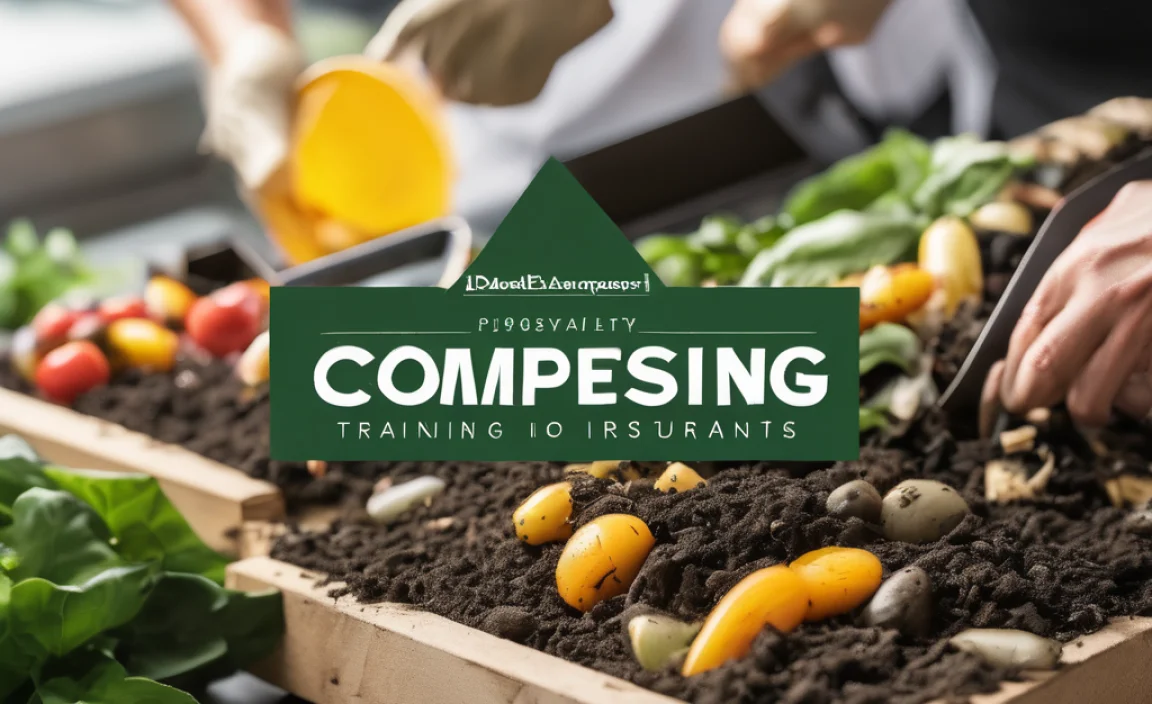
There isn’t a one-size-fits-all approach to composting for restaurants. Your best option depends on your space, volume of waste, and budget. Here are a few common methods:
1. On-Site Composting Systems
This involves managing the composting process right at your restaurant. It’s great for those who want full control and can dedicate some space.
- Aerobic Composting Bins/Piles: This is the most common method. You create piles or use enclosed bins. They need to be turned regularly to add air, which helps speed up decomposition and reduce odors. Think of it as “hot composting.” A well-managed pile can break down waste relatively quickly.
- In-Vessel Composting: These are enclosed systems (often tumblers or bins) that contain the compost materials. They can be more efficient, reduce odors, and deter pests better than open piles. They are also a good choice if space is very limited. Websites like ReoTemp often list various composting methods and equipment useful for larger-scale operations.
- Vermicomposting (Worm Composting): While popular for homes, it can be scaled up for restaurants with specific types of waste (like fresh fruit and vegetable scraps). Red wiggler worms do the work, breaking down food scraps quickly. However, it requires careful temperature control and management to keep the worms healthy and productive.
Pros of On-Site: More control, potential to create high-quality compost for own use, can be cost-effective long-term if managed well.
Cons of On-Site: Requires space, staff training, ongoing management, potential for odor or pest issues if not done correctly.
2. Off-Site Composting Services
This is often the simplest and most practical solution for many restaurants. You partner with a commercial composting company that collects your organic waste regularly.
These services provide bins, pick up your food scraps on a schedule, and handle the entire composting process at their facility. They typically have advanced systems to process large volumes efficiently and safely.
Pros of Off-Site: Minimal staff training required, no need for space, eliminates odor/pest concerns at your location, often more convenient.
Cons of Off-Site: Ongoing monthly fees, less control over the process, may not be available in all areas.
Table: Composting Methods at a Glance
| Method | Setup Requirements | Staff Involvement | Odor/Pest Risk | Best For |
|---|---|---|---|---|
| On-Site Aerobic Piles/Bins | Dedicated space, turning tools, bins | High (turning, monitoring moisture/temp) | Medium (if poorly managed) | Restaurants with space, willing to manage |
| On-Site In-Vessel | Enclosed system, space | Medium (emptying, basic monitoring) | Low to Medium | Restaurants with limited space, wanting contained system |
| On-Site Vermicomposting | Worm bin, bedding, specific food waste | Medium (feeding worms, managing bin) | Low (if managed well) | Restaurants focused on produce waste, willing to manage worms |
| Off-Site Service | Designated drop-off or pick-up bins | Low (sorting into bins) | Very Low (at restaurant location) | Most restaurants, prioritizing ease and convenience |
Essential Composting for Restaurants Training for Staff
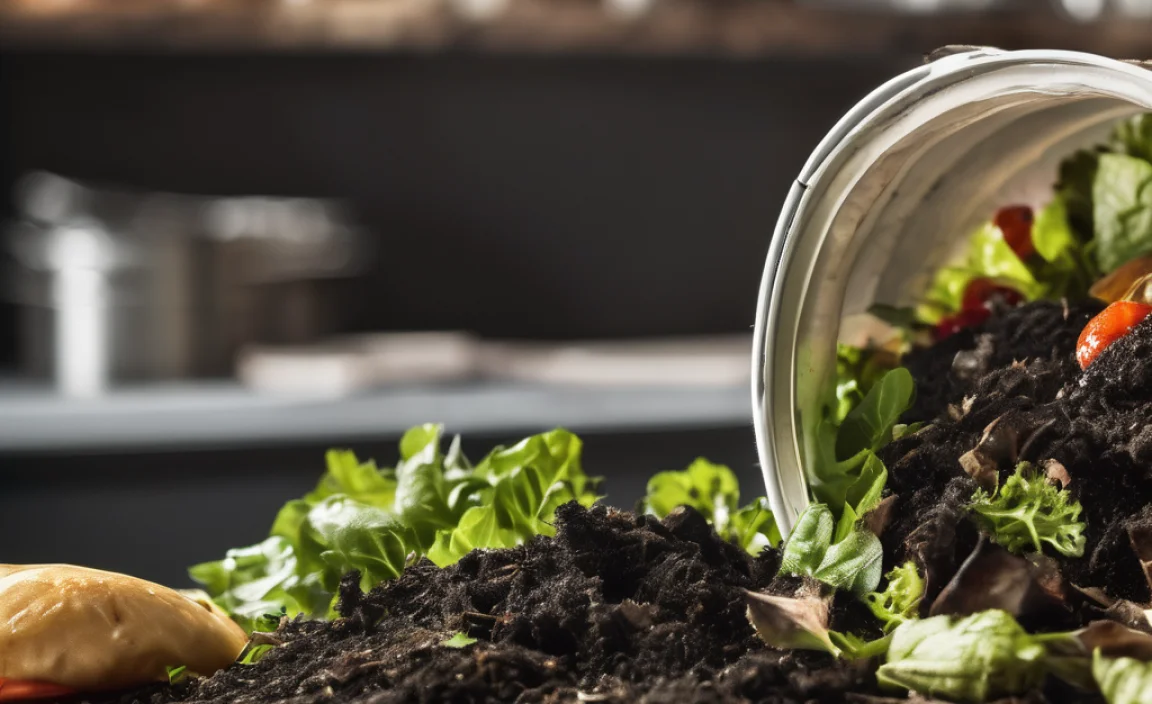
A successful composting program hinges on your staff. Proper training ensures everyone knows what to do, reducing contamination and maximizing efficiency. Here’s a breakdown of key training modules:
Module 1: Why We Compost (The Big Picture)
Start by sharing the “why.” Explain the benefits in simple terms:
- We’re reducing trash that goes to landfills.
- We’re helping the environment by creating healthy soil.
- Our restaurant is being more responsible and eco-friendly.
- It can potentially save the restaurant money.
Show them visuals if possible – maybe a picture of a landfill versus a garden thriving on compost.
Module 2: What Goes In & What Stays Out
This is the most critical part. Use clear, visual aids!
- The “Yes” List: Show pictures or examples of approved items (fruit/veg scraps, coffee grounds, eggshells, plain paper napkins).
- The “No” List: Show pictures or examples of items to avoid (meat, dairy, oils, plastics, glass, anything with chemical coatings).
Practical Tip: Create laminated posters for every station (prep line, dish pit, server stations) showing clear “Do” and “Don’t” graphics.
Module 3: Where Does It Go? (Collection Points)
Designate specific bins for different types of waste. Training should cover:
- Location of Collection Bins: Where are the designated compost bins located in the kitchen, prep areas, and front-of-house (if applicable)?
- Bin Etiquette:
- Empty scraps directly into the large collection bin.
- Do not bag compostable materials unless specifically instructed by your service provider (some services require liners, others don’t).
- Rinse and drain excess liquids if possible – too much moisture can create smell.
- Always close the lid tightly after use.
Module 4: Handling and Contamination
Explain the impact of contamination:
- If non-compostable items get in, the whole batch can be ruined.
- It makes the job harder for whoever is processing the compost (your staff or the service).
- It can lead to smells and pests in the kitchen.
Emphasize: “When in doubt, throw it out (in the regular trash).” It’s better to miss one compostable item than to contaminate a whole bin.
Module 5: Specific Roles & Responsibilities
Assign clear roles:
- Kitchen Staff: Responsible for scraping plates and prep scraps into designated bins.
- Dish Pit Staff: Responsible for ensuring plate scrapings go into compost bins, not just the trash.
- Servers/Front-of-House: Responsible for, if applicable, collecting customer food scraps and directing them to the correct bins.
- Management/Designated Champion: Responsible for bin management, coordinating pick-ups, ensuring bins are clean, and regular staff refreshers.
Implementing Your Composting Program: Step-by-Step
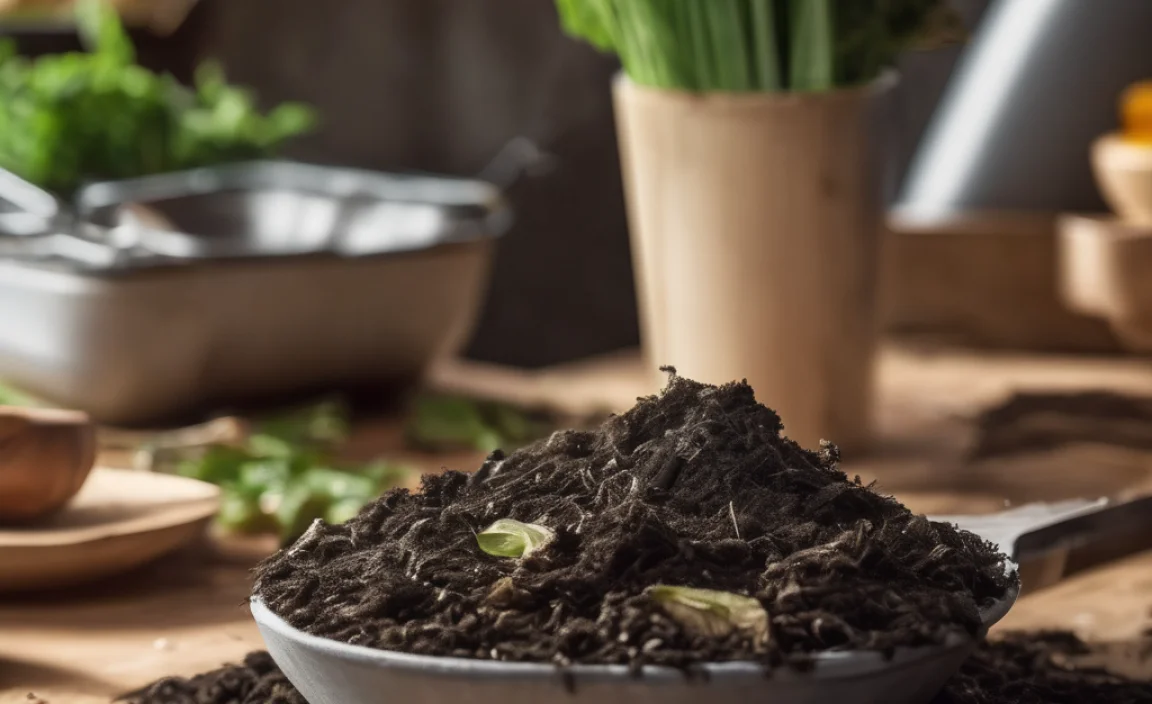
Ready to put it all into action? Follow these steps:
Step 1: Assess Your Waste Stream
Before you do anything, find out how much organic waste your restaurant produces and what types. You can do this by conducting a waste audit for a few days. This will help you decide on the best composting method and determine the size and number of bins you’ll need.
Step 2: Choose Your Composting Method
Based on your waste assessment, space, budget, and staff capacity, decide whether an on-site system or an off-site service is best for you. Research local composting services if you’re leaning towards outsourcing.
Step 3: Select and Purchase Equipment
For On-Site:
- Composting bins or tumblers.
- Tools for turning (pitchfork, aerator).
- Thermometer to monitor pile temperature (optional but recommended).
- Small countertop collection bins for kitchens.
- Larger outdoor bins if needed.
For Off-Site:
- Discuss bin size and type with your chosen service provider.
- Ensure you have enough smaller collection bins at points of waste generation.
Step 4: Develop a Collection System
Set up your bins. Make sure they are:
- Clearly labeled with what can and cannot go in them.
- Placed in convenient locations for staff.
- Regularly emptied into larger collection bins or ready for pick-up.
Consider using different colored bins for compost, recycling, and trash to avoid confusion.
Step 5: Train Your Staff Thoroughly
Conduct the training sessions outlined above. Make it interactive! Have staff practice sorting imaginary waste. Remember to train new hires as part of their onboarding.
Tip: Designate a “Compost Champion” – a team member who is enthusiastic and can help answer questions and keep the program on track.
Step 6: Launch and Monitor
Announce the launch of your new composting program! During the first few weeks, closely monitor:
- Are staff sorting correctly?
- Are bins being used properly?
- Are there any signs of pests or odors?
- How is the volume of waste changing?
Address any issues quickly and provide additional training or support as needed.
Step 7: Refine and Optimize
Composting is an ongoing process. Regularly review your program. Talk to your staff about what’s working and what could be improved. If using an off-site service, communicate with them about your progress and any challenges.
Over time, you’ll find the rhythm and make adjustments to make it even more efficient.
Dealing with Challenges and Best Practices
Even with the best training, challenges can arise. Here’s how to tackle them:
- Odor Control: Odors usually mean the compost is too wet, lacks air, or has prohibited items.
- Ensure bins are not overloaded.
- Add brown materials (like shredded cardboard, if allowed) to absorb moisture.
- For on-site piles, turn them more frequently.
- Ensure lids are always closed.
- Pest Control: Pests are attracted by exposed food waste, especially meat and dairy.
- Use sturdy, lidded bins.
- For on-site systems, consider using enclosed composting units.
- Ensure all food scraps are properly contained.
- Regularly clean around your composting areas.
- Avoid composting items that attract pests (meat, dairy, oils).
- Contamination: This is the biggest hurdle.
- Continuous training and visual reminders are key.
- Make sorting as easy and intuitive as possible.
- Have a designated person check bins periodically before they are collected or processed.
- Staff Buy-In: Some staff might see it as extra work.
- Reinforce the “why” and the benefits repeatedly.
- Celebrate successes (e.g., “We diverted X pounds of waste this month!”).
- Make it part of the restaurant’s culture and values.
- Get management to lead by example.
For more advanced insights on composting science and best practices, resources like the US Composting Council offer a wealth of information for larger-scale operations.
Frequently Asked Questions About Restaurant Composting Training
Q1: How long does it take to train staff on composting?
The initial training session can be quick, around 30-60 minutes, focusing on the basics. However, it’s not a one-time event. Ongoing reinforcement through reminders, visual aids, and quick team huddles is crucial. New hire training should also be standard.
Q2: What if I don’t have much space for composting bins?
If space is a major constraint, an off-site commercial composting service is likely your best bet. They handle the bulk of the composting off your premises. For on-site, consider compact in-vessel systems or worm composting, which require less outdoor space.
Q3: Are there any certifications I should look for in compostable packaging?
Yes! Look for certifications like BPI (Biodegradable Products Institute) or CMA (Compost Manufacturing Alliance) for compostable packaging. These ensure the items break down in commercial composting facilities. Always check if your chosen composting service accepts certified compostable items.
Q4: What’s the biggest mistake restaurants make with composting?
The most common mistake is contamination. When non-compostable items are mixed in, it can ruin the entire batch of compost, making it unusable and potentially costing the composting facility more to sort. Clear training and visual aids are essential to prevent this.
Q5: How often should the compost bins be collected?
This depends on your restaurant’s volume of organic waste and the size of your collection bins. For busy restaurants, daily or every-other-day collection might be necessary if using smaller bins. If using large commercial bins with an off-site service, your pick-up schedule will be determined by the provider, often weekly or bi-weekly.

I am passionate about home engineering. I specialize in designing, installing, and maintaining heating, ventilation, and air conditioning systems. My goal is to help people stay comfortable in their homes all year long.

